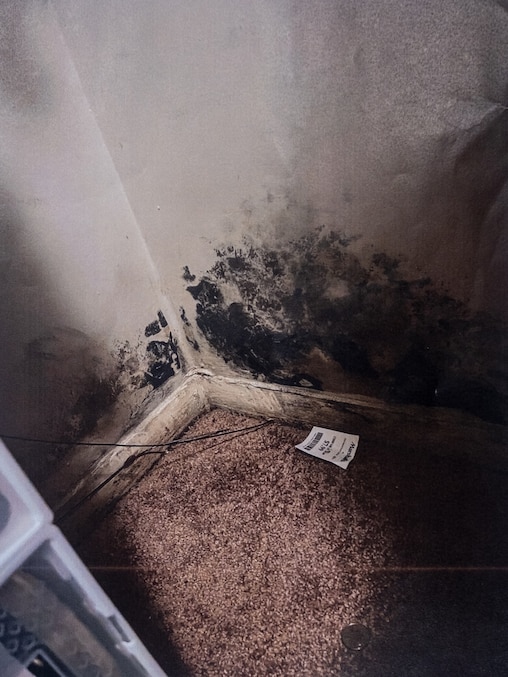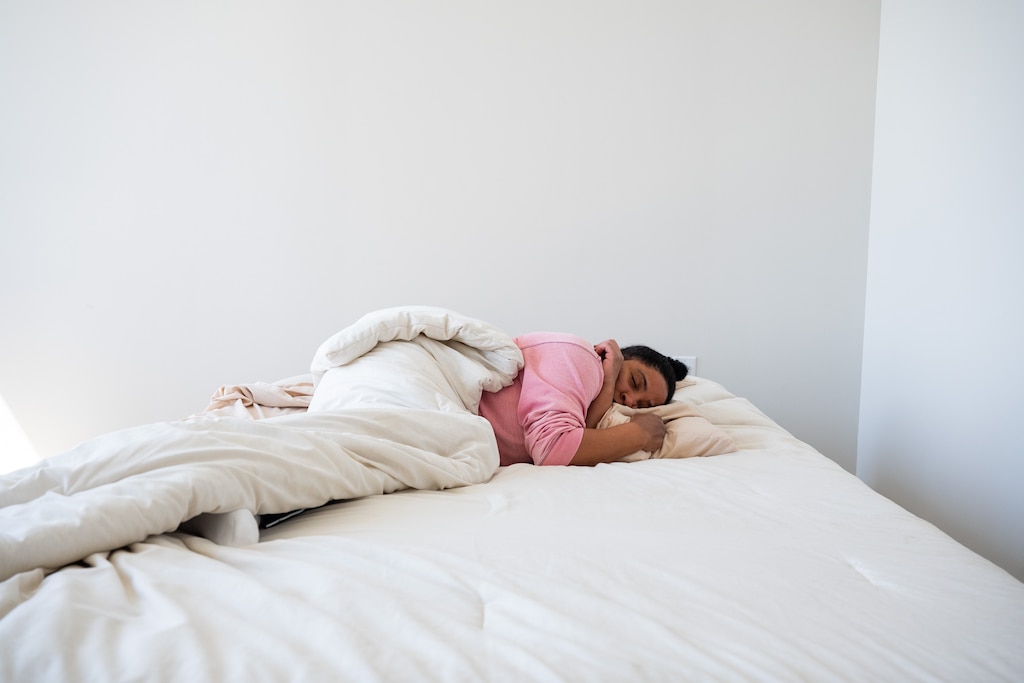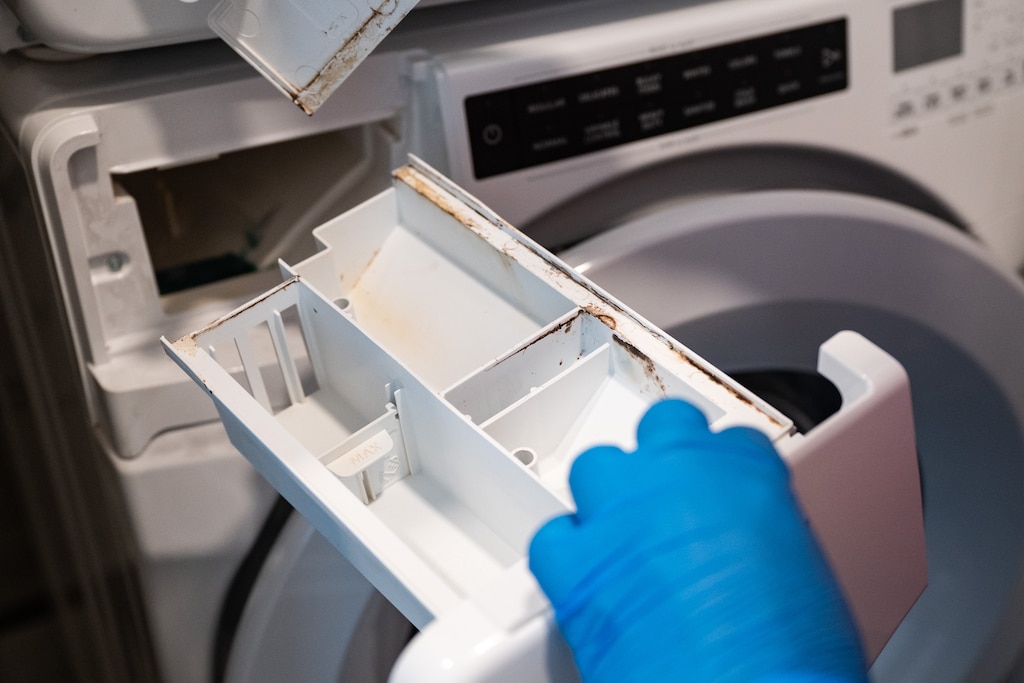It’s easy to smell and easier to see. But little else about mold is straightforward.
Maryland lawmakers nonetheless could soon take a stab at defining what counts as dangerous mold after state agency leaders spent a year reviewing best practices. For those who have wrestled with expelling the fungus from their homes, schools and businesses, added regulations would be a welcome step forward.
That doesn’t mean they should expect to live, work or play in mold-free environments anytime soon. Researchers, industrial hygienists and home inspectors say it’s nearly impossible to keep moisture, and mold, outside. Flooding, meanwhile, is likely to become more common with climate change.
It also doesn’t likely mean that the issue, and level of harm, will be settled. The U.S. Environmental Protection Agency says there is no established safe threshold of mold on surfaces or in the air and people will react differently to exposure.
“The reason there aren’t regulations is that there isn’t a lot of science that’s been done on mold,” said Dr. Arturo Casadevall, a microbiologist and immunologist at the Johns Hopkins University and co-author of “What If Fungi Win?”
“It’s not established what people can live with.”
Maryland Gov. Wes Moore signed a bill into law last year requiring state departmental leaders in environmental, housing, health and related fields to recommend standards around mold. The task force delivered a report to the governor’s office and the General Assembly in October, findings that haven’t been released.
State officials could, for example, set a threshold for when it should be considered hazardous or mandate a time frame for when it ought to be remediated. But without more research, some say Maryland’s rules likely won’t go far enough.
Using the word “mold” is a lot like using the word “herb,” said Joan Bennett, professor in the Rutgers University Department of Biochemistry and Microbiology. There are thousands of types, a range of colors and some disagreement about how best to remediate it.
Bennett’s experience studying the subject started with a personal experience: fleeing her home in New Orleans with her husband and pets during Hurricane Katrina in 2005.
She returned weeks later to survey the damage to her house, which took on 42 inches of water. Bennett “traveled with a suitcase full of sterile swabs, masks, gloves, and 10 sleeves of petri dishes filled with growth media,” which she recounted in an essay for Science Magazine called, “The fungi that ate my house.”
But like the mold spores left to fester and bloom in her home, Bennett’s questions have only multiplied.
Bennet said she felt sick in her home and had to step outside multiple times between collecting samples. She said it’s unknown why some people report being sickened by mold exposure while some don’t and why some mold grows faster than others. There are no universally accepted mold testing standards, no blood or urine tests and little federal funding for those seeking to understand it better.
That means efforts nationally to regulate mold have been stymied, she said.
“We thought it would happen after Katrina, but there was more study on cholera,” Bennett said. The National Institutes of Health “put it on the wish list,” she added, “but then the pandemic hit.”
Mold at home
Ask almost any Baltimore tenant and they are likely to say they’ve lived with mold. But not all landlords view it as an urgent fix.
One high-profile incident led to a judgement of $1.25 million to the owner of a waterfront penthouse unit in a Harborview condominium building. The owner launched a long-running claim beginning in 2010 against the condo association for failing to maintain the roof and HVAC systems, leaving his property damaged and his apartment uninhabitable due to water and mold.
Low- and middle-income tenants tend to have a tougher time getting mold addressed. At the Dutch Village apartment complex in Northeast Baltimore, tenant Dhnea Bias said mold and other problems made her home uninhabitable.
Photos taken at Dutch Village show black and brown spots near the carpets and spores splattered across the walls. Despite repeated requests to the property manager to treat the mold and other health hazards, Bias said, the situation had not improved, leading her to withhold monthly rent payments.


Bias was sued for nonpayment of rent, but after some dispute over what was owed during an October court hearing, a Baltimore District Court judge dismissed the case. A representative from Dutch Village’s property management company, Aven Realty, didn’t respond to a request for comment about whether the mold will be cleaned. Bias said she plans to move out this month.
Generally, legal challenges involving mold are more straightforward if they are related to property damage, said Raymond Burke, a lawyer at Gordon Feinblatt LLC who has represented both building owners and tenants in mold-related cases. He represented the condo owner in the Harborview suit.
That’s because there are building codes that address water damage.
Health-based complaints are case by case because of that lack of standards for how much mold is safe and the different reactions people have based on allergies or underlying conditions.
When it comes to the legal system, he said, “it’s a building issue before it’s a health issue.”
The cost of mold
It’s also a financial issue.
Faresha Sims, 44, said she was exposed to mold in an apartment building called the Palisades of Towson, where she lived for about a decade. An administrative law judge found the building in violation of Baltimore County code and ordered management to remediate the mold in 2023 or face a $2,000 penalty. The Palisades of Towson did not respond to requests for comment.
After spending thousands of dollars on testing and finding mold throughout the building and ventilation system, Sims tossed most of her belongings, moved to the city and hoped for a fresh start. She moved to the Harbor East apartment building Avalon 555 President. But the firm she hired to test her two-bedroom penthouse suite found “elevated levels” of mold there, too.


To Sims, the discovery was crushing. “People are running from one mold-infested place to another,” she said.
She filed a complaint with the Better Business Bureau. Christopher McGaunn, an attorney for AvalonBay Communities Inc., responded in a January letter that the landlord “vehemently disputes” that the apartment is unsafe, citing its own third-party moisture testing that found no abnormalities. Sims noted that the company did not order a mold test; representatives from AvalonBay declined to answer if they ordered one.
Mold inspections can cost hundreds of dollars. In a tight housing economy, only about a third of clients are asking for them, said Rachel Oslund, a home inspector and managing partner of LodeStar Inspection Services in Ellicott City.
When Oslund tests for air quality or radon — which, unlike mold, is sometimes required to be tested in places such as Montgomery County — she can use established standards dictated by the EPA to guide clients on the seriousness of the problem. Mold is trickier.
“It’s not as easy as pass-fail, high-low, safe-unsafe,” she said.
Oslund usually tells clients that test results showing higher levels of mold inside the house compared to outside of the house usually indicate a problem. But not everyone will react poorly to mold, she said, or feel compelled to go to the lengths to remove it.
“We’re not industrial hygienists, so we can’t come up with a plan,” Oslund said, “and buyers don’t want to pay for that.”
Mold in other states
When Maryland lawmakers ordered the mold task force to study the topic, it garnered support from both housing advocates and trade groups. Some, including lobbyists for building owners and property managers, said tenants should have some responsibilities to control mold, too.
Some also pointed to other states’ efforts to get a handle on the problem. Washington, D.C., for example, set a threshold for when mold should be remediated by a licensed professional. Virginia law requires landlords to remediate mold if it’s “visible.” And New York, which groups mold in the same category as indoor allergens and pests, outlines how to remediate mold.
Julie Barth, a certified industrial hygienist who testified about mold to state legislators in 2023, said Maryland could follow other states in establishing standards that aren’t “too prescriptive” and allow for professional judgment since each case can be unique.
Barth also said some may think they’re reacting strongly to mold when it might be something different, such as pollen, dust or cleaning products, among other causes. And people frequently expose themselves to more mold outside than indoors, she added.
That’s why mold shouldn’t automatically be considered “toxic.” Barth added one way to get mold more attention, and regulation, is to call it what people think it is.
“Unsanitary,” she said. “That term inspires change.”
Think you have mold? Baltimore renters with complaints unresolved by the landlord should call 311, according to the health department’s website. Some nuisance complaints go to health officials, but mold calls more typically would go to the housing department to investigate the moisture intrusion, such as a leaking roof or pipe. Homeowners with mold should refer to the U.S. Centers for Disease Control and Prevention website to get rid of mold.




Comments
Welcome to The Banner's subscriber-only commenting community. Please review our community guidelines.